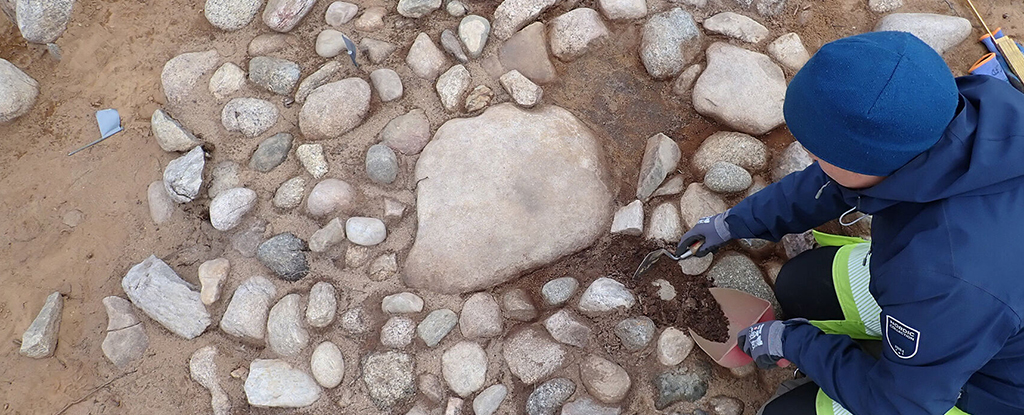Ancient archaeological discoveries can be confusing, exciting, intriguing, educational – and occasionally just a little creepy, as a new excavation of a 2,500-year-old graveyard site in Norway has proved.
Here’s the creepy part: the main cluster of graves, comprising 39 individual bodies, were all for children under the age of six – based on a close study of the fragments of bones that had escaped being cremated.
There were two other graves containing adult bodies but these were separate from the main group.
However, it’s not certain that anything sinister has gone on. This would’ve been a time when the infant mortality rate was relatively high – though questions remain about why the graves were separate, rather than communal.
“There was something special about the whole site,” excavation leader Guro Fossum, an archaeologist from the Museum of Cultural History in Oslo, told Mette Estep of Science Norway.
“Cooking pits and fireplaces around the site suggest that gatherings and ceremonies were held in connection with burials.”
The graves span a long time in history, across the transition between the Bronze Age and the Iron Age.
When the excavation in Østfold county first began – to clear the ground for the expansion of a local quarry – archaeologists were expecting to find artifacts from the Stone Age, rather than graves from two millennia later.
Most of the burials would’ve happened between 800 and 200 BCE, the researchers say, and were placed close to thoroughfares in terms of their location – so it’s something the whole community would’ve known about. It doesn’t look like these were secret burials.
“Additionally, all the graves were so nice and meticulously crafted,” Fossum told Science Norway. “Each stone was sourced from a different location and placed precisely in the formation. We wondered who put in so much effort.”
The graves were round or oval in shape, with diameters up to 2 meters (6.5 feet). Some of them were laid out with a central flagstone with edge stones around it. It’s something that hasn’t been seen before in Europe, the team of archaeologists says.
While we may never know exactly what went on here, the grave excavation is now being featured as part of an exhibition at the Museum of Cultural History in Oslo, entitled In Memory of the Children. The exhibition runs until September 29, 2024, and includes a reconstruction of one of the stone graves.
“Why were the children buried in a separate place? Why here? And how did they hold on to this tradition for several hundred years?” reads the introduction to the exhibition.
Work is continuing to analyze fragments of pottery that were found at the same site – possibly containers for the burned bones that have just been studied – which may reveal more about these people and how they lived.
In the meantime we can add it to the list of fascinating burial sites that have been uncovered over time.





